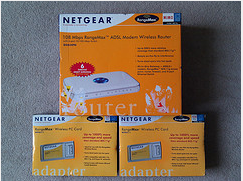 In today’s economy, everyone is trying to save money. That applies to businesses as well as to individuals. Cutting the fat from the budget is important for more than the government. It’s just as important for businesses who want to profit in the coming months.
In today’s economy, everyone is trying to save money. That applies to businesses as well as to individuals. Cutting the fat from the budget is important for more than the government. It’s just as important for businesses who want to profit in the coming months.
One often overlooked way to cut overhead and operating expenses is to upgrade existing technology. Many people fail to see the correlation between the two, but there are a number of ways that improved technology can save your business money.
Outdated equipment is often much slower than newer models. Computers with outdated operating systems and accounting or word processing software, for instance, can take much longer to load or process data. That means employees spend more time waiting on the computer to “catch up” than is necessary.
Wasted time can dramatically increase labor costs. Cutting only 15 minutes of waiting time per day by upgrading existing computers offers an added 65 hours of employee time every year. That will cover a one week vacation and more for every employee who regains that time into the work day.
In addition to new software, computer hardware and related technology should be upgraded as well. Wireless routers, for example, are innovative new components that could potentially help a company eliminate the number of Internet accounts needed by allowing employees to share a connection. This can add up to substantial savings over the course of a year.
Outdated equipment and technology also present compatibility issues. When employees must interact with vendors, clients or customers whose technology surpasses their own, it can create headaches for both parties concerned, often costing a considerable amount of time (which equates to money), not to mention frustration, to create a workaround option.
If your company publishes a customer newsletter, for example, and your technology is outdated, your employees could be spending hours longer than needed to make the files compatible with an outside printer’s equipment. Updated technology can alleviate many hours of labor and aggravation in a variety of circumstances.
Updated technology also requires less maintenance. The parts on printers, computers, copiers, audio systems and everything else will wear over time and with use. As equipment ages, maintenance calls become more frequent, and more costly.
Maintaining valid warranties will help cover the costs of needed repairs, but in order to function under a warranty, equipment must be upgraded when needed. Again, this will ultimately create savings in your overhead costs.
While your first instinct when cutting costs may be to eliminate upgrades to existing technology, you might want to reconsider that decision. While it may be a slight expense up front, updating your technology is really an investment in your company. One that can save you a large amount of money over time,
Companies can also use systems like Dell Virtualisation that not only share files across a network but allow access to a remote desktop environment, greatly cutting costs for IT and removing the need for constant hardware upgrades.





A very impressive save in costs can come about for a business if they decide to move their software for managing their everyday operations (aka their ERP) from a traditional solution to the more modern cloud option. I’ve written a post on our megaventory.com blog regarding why cloud ERP is superior here:
http://blog.megaventory.com/2011/12/whats-cloud-erp-and-why-its-better-than.html